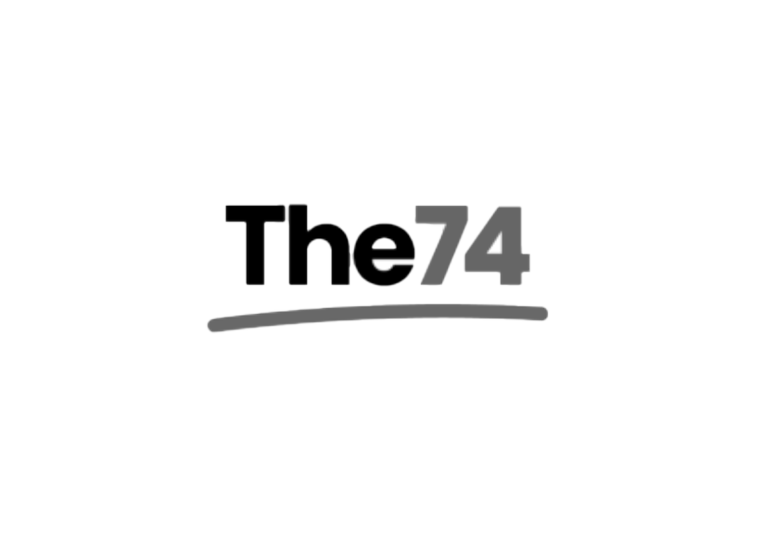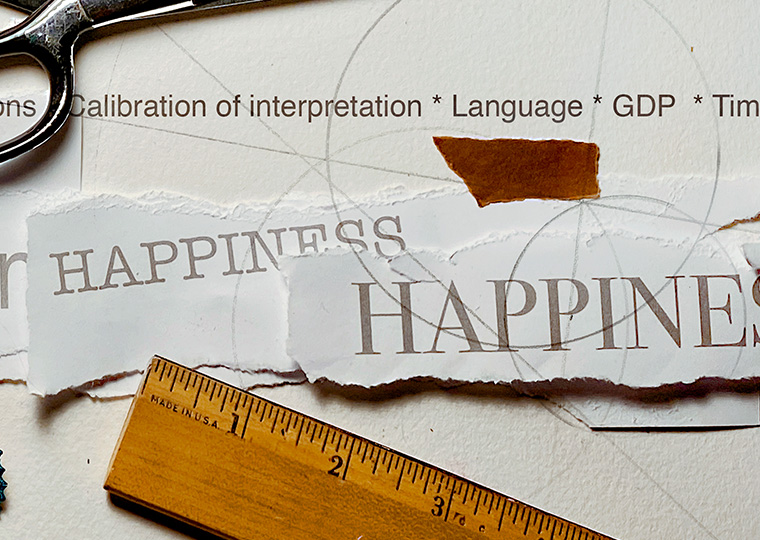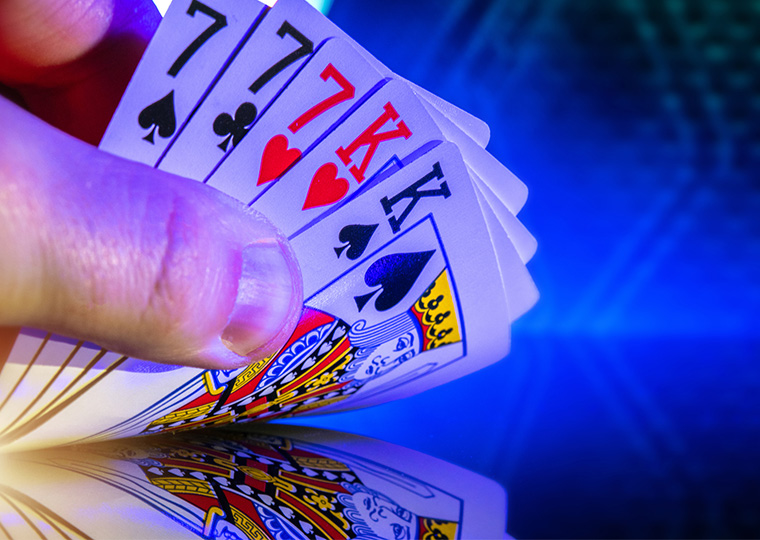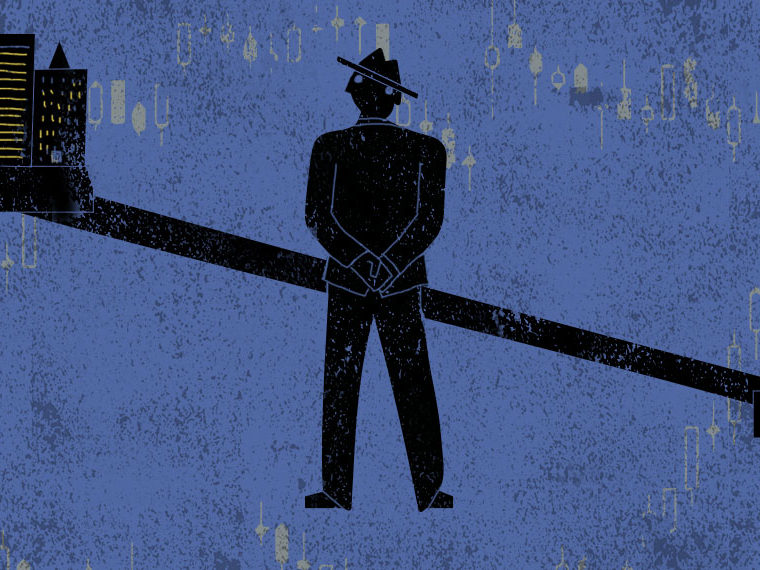They counteract the impulses of two other market personality types
Financial markets are often portrayed as a battle between rational investors and irrational speculators. A working paper instead sorts market players into three personality types and shows how they collectively impact prices and volume of trading.
Nanyang Technological University’s Jiang Luo and Shuoge Qian, Xi’an Jiaotong University’s Zheng Qiao and UCLA Anderson’s Avanidhar Subrahmanyam developed a model exploring how three psychological factors — gambling tendencies, emotional attachments to companies and overconfidence — interact to influence stock prices and trading patterns.
While these three elements have been modeled in isolation before, the authors’ general equilibrium model — which makes supply match demand — examines all three behaviors at once. The results challenge conventional wisdom about market efficiency and suggest that gambling-motivated investors play an unexpectedly positive role in markets.
Think of the frenzied trading around “meme stocks” like GameStop in 2021. The market became a theater for different motivations: affect investors with an emotional attachment to the company and the movement, overconfident investors who believed they had a unique edge and gamblers drawn to the thrill of massive volatility and taking huge positions.
Thrill Trades and Tamed Prices
“This type of gambling propensity represents a ‘betting-big’ tendency, which reflects the idea that a large position (either positive or negative) in a stock increases the ‘thrill’ of gambling in financial markets,” the authors explain.
These thrill-seeking gamblers may serve an unexpected role in the market ecosystem. When emotional investors are desperately trying to buy a beloved brand, driving its price too high, gamblers are happy to sell to them.
Similarly, when overconfident investors are underreacting to public information, they trade aggressively on their own signal, creating mispricing. Gamblers then step in, trading eagerly and providing liquidity. This further amplifies overall trading volume.
By always being willing to play either side of the trade, gamblers act like shock absorbers, soaking up the market’s emotional extremes and helping prices move, at least partially, closer to fundamental values.
When emotional investors all buy a popular stock or overconfident investors all jump on the other side to sell, the seesaw can lurch violently, creating price distortions. Gamblers act as a balancing force, the authors posit. They don’t particularly care which side is “better”; they just enjoy the thrill of taking large positions.
This liquidity provision has several measurable effects:
- Higher trading volume: Stocks popular with gambling-prone investors show significantly higher turnover.
- Reduced price distortions: Gambling investors help dampen (though not eliminate) the excessive price movements associated with overconfidence.
- Weaker post-announcement drift: When companies announce important news, prices in gambling-heavy areas react more completely and quickly than in other areas, incorporating more of the information into pricing.
Identifying Where the Gamblers Live
To test their theory, the researchers needed creative proxies for psychological traits. For gambling propensity, they used the Catholic-to-Protestant ratio in counties where companies are headquartered, building on established research showing Catholics are generally more tolerant of gambling than Protestants and that investors tend to have a “home bias,” investing more in local companies. For emotional attachment, they used companies’ advertising expenditures, since heavily advertised brands tend to evoke stronger emotional responses from consumers.
The data on advertising spending, along with other accounting data, came from Compustat, while survey data from the Association of Religion Data Archives was used to create the gambling proxy. Along with these proxies, the researchers analyzed U.S. stock market data from July 1981 to December 2021 from the CRSP database.
Luo, Qian, Qiao and Subrahmanyam contend that there is strong empirical support for their model predictions. A certain significant increase in the Catholic-to-Protestant ratio corresponds to about a 4.27% increase in median stock turnover and reduces the “relative beta” (a measure of price distortion) by about 3.9%.
Most strikingly, high-advertising stocks underperform by 19.6 basis points per month in low-gambling areas but outperform by 12.3 basis points in high-gambling areas — a statistically significant difference of 31.9 basis points.
There are some limitations to the study. It focuses solely on U.S. markets and the proxies for gambling and emotional attachment are indirect measures that may capture other effects. The authors note they chose advertising spending over other potential “affect” proxies, like ESG ratings or “sin stock” status, because the limited data available for those categories would have reduced the statistical power of their tests. Another limitation is that the model assigns each investor just one bias at a time — gambling, affect or overconfidence — rather than allowing multiple biases to coexist within the same person.
It’s also worth noting that not all gambling behavior is beneficial. Other research shows that when individual investors seek out stocks with a small chance of a very large gain, but also a high chance of a loss, it can lead to overpricing and predictable losses. This suggests the stabilizing effect found here is specific to the “betting big” tendency that provides liquidity, rather than a universal rule for all forms of market gambling.
Featured Faculty
-
Avanidhar Subrahmanyam
Distinguished Professor of Finance; Goldyne and Irwin Hearsh Chair in Money and Banking
About the Research
Luo, J., Qian, S., Qiao, Z., &Subrahmanyam, A. (2024). Asset Pricing with Affect Investing, Gambling, and Overconfidence: Theory and Evidence. Nanyang Business School Research Paper, (24-16).







